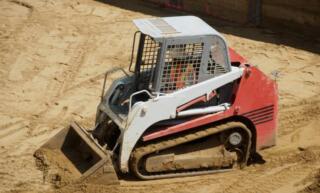
What To Do if Your Warehouse Is Running Low on Storage
Managing a warehouse comes with its unique set of challenges, and space constraints top that list. It’s a common struggle for warehouse managers, business leaders, and logistics professionals who are keen on optimizing their operations.
Running out of storage can lead to inefficiencies, delays, and unhappy customers. Here, we’re diving into what to do if your warehouse is running low on storage, with an emphasis on solutions and making the best use of what you already have.
Signs Your Warehouse Needs More Storage Space
Recognizing when your warehouse is running low on storage is crucial to maintaining smooth operations. Are your aisles cluttered with goods? Do you frequently struggle to find space for new inventory? These are clear indicators of a space shortage. Insufficient storage hampers daily operations and might delay order fulfillment, which can lead to dissatisfied customers.
The Impact of Insufficient Space
The consequences of running out of storage space extend beyond mere inconvenience. When space is tight, operations can slow down significantly. Workers spend more time locating items, which decreases productivity. Additionally, the risk of inventory damage rises as workers might stack goods haphazardly to make room for incoming shipments.
Customer satisfaction is another area of great concern. Delays in finding and shipping products can lead to longer delivery times. In today’s fast-paced market, customers expect quick and accurate order fulfillment. Failure to meet these expectations results in lost business and tarnished reputations.
Reorganize Inventory to Maximize Space
One of the first steps to address storage issues is reorganizing your existing inventory. Start by conducting a thorough audit of your warehouse. Identify items that you rarely use or are outdated and consider relocating them to an offsite storage facility. This frees up space for high-demand products.
Implementing a systematic organization method, such as FIFO (First In, First Out) or LIFO (Last In, First Out), can also manage space better. By keeping the most frequently accessed items easily available, you reduce the time workers spend searching for products.
Compact Palletizing Techniques
Addressing space constraints with compact palletizing techniques can significantly increase your warehouse capacity. Compact palletizing involves stacking goods more efficiently on pallets and minimizes wasted space. This method frees up floor space and makes it easier to organize and access inventory.
Investing in high-quality pallets and training staff in efficient stacking methods can optimize storage. Additionally, using standardized pallet sizes ensures you consistently use available space to its maximum potential.
Use Vertical Storage Options
Another effective solution for increasing warehouse capacity is vertical storage. By making use of the vertical space in your warehouse, you can store more items without expanding your footprint. Installing taller shelving units or mezzanines allows you to stack goods higher and frees up valuable floor space.
Best Practices for Implementing Space-Saving Strategies
When implementing space-saving strategies, it’s important to involve your team in the process. Provide training in new methods and equipment to ensure everyone is on the same page. Regularly review and update your storage policies to keep up with changing inventory needs.
If you’re trying to figure out what to do if your warehouse runs out of storage, consider one of these solutions as your best friend. By identifying the signs early and implementing one of these strategies, you will optimize your warehouse operations. Reorganizing inventory, adopting compact palletizing techniques, and using vertical storage are just a few small ways you can make a big difference.




